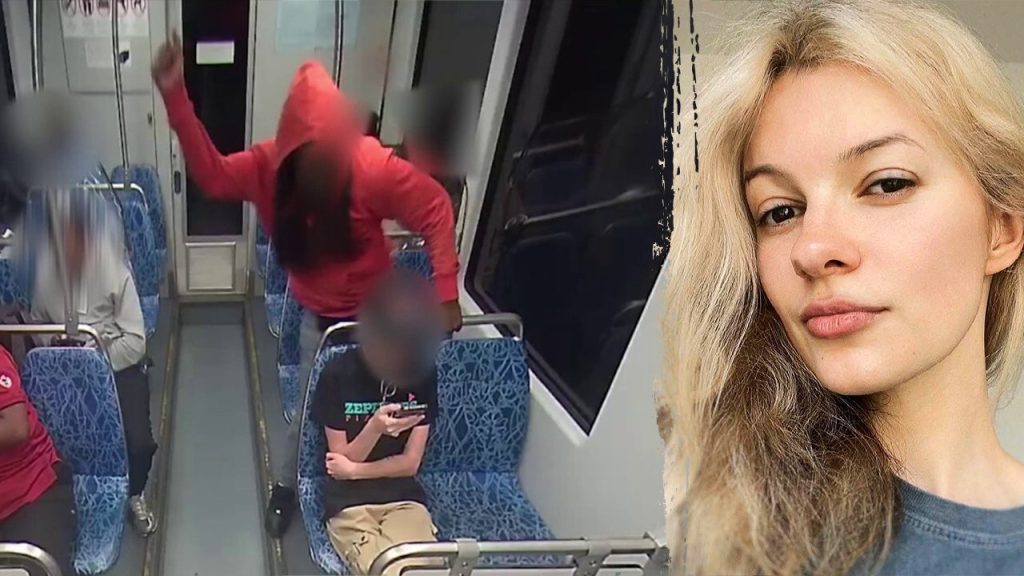The Growing Crisis of Violence on American Public Transit
In a recent wave of alarming incidents, public transportation across America has become an increasingly dangerous space for commuters. The tragic death of Iryna Zarutska, a 23-year-old Ukrainian refugee who fled war only to be fatally stabbed on a Charlotte train, has become a symbol of this disturbing trend. Surveillance footage captured the horrific moment when a man in a red hoodie, later identified as Decarlos Brown, randomly attacked Zarutska as she was returning home from her job at a pizzeria. This senseless killing has sent shockwaves through communities nationwide, highlighting the vulnerability of transit riders who have little control over who sits beside them or how to escape dangerous situations in confined spaces.
The impact of transit violence disproportionately affects low-income and middle-class Americans who rely on public transportation for their daily commute. As Lance LoRusso from the Blue Line Lawyer Institute points out, “Riders do not choose their fellow passengers and have no choice but to accept a seat next to someone who may cause them concern.” Unlike taking a private taxi where one can decline to share a ride, public transit offers limited escape routes and few self-defense options. The democratic nature of public transportation—its accessibility to everyone—creates an inherent security challenge. When violence erupts in these enclosed spaces, passengers often find themselves trapped with nowhere to go, making even crowded trains and buses potential sites for “horrible tragedies,” as LoRusso notes.
Chicago’s transit system has witnessed multiple violent episodes in recent months, including a morning attack on the Red Line where five individuals allegedly beat and robbed a passenger. Just months earlier, four suspects reportedly assaulted an elderly man on the same line, stealing his cellphone and attacking him when he attempted to recover it. These incidents represent just a small fraction of the violence plaguing Chicago’s transit system, leaving commuters to wonder if their daily travel routines might put them at risk. The pattern of group attacks on vulnerable individuals demonstrates how public transportation can become a hunting ground for opportunistic criminals who take advantage of the confined space and limited security presence.
The high-profile case of Daniel Penny, a Marine veteran who was acquitted after a deadly subway confrontation in New York City, illustrates the complex ethical dilemmas transit violence creates. When Jordan Neely, a homeless man with schizophrenia, began threatening passengers on an F train in 2023, Penny intervened with a chokehold that resulted in Neely’s death. Witness testimony described Neely shouting that someone would “die that day,” creating a climate of fear among passengers. Penny’s acquittal on manslaughter charges sparked national debate about self-defense, bystander intervention, and the absence of immediate law enforcement in transit emergencies. The case highlighted how ordinary commuters sometimes find themselves making split-second decisions in potentially life-threatening situations when professional help isn’t immediately available.
The pattern of random stabbings on public transit has become disturbingly common. In Los Angeles, a verbal dispute between two men on a Metro G Line bus escalated when 23-year-old Logan Dunn allegedly pulled out a pocket knife and stabbed another passenger three times in the neck, leaving the victim in grave condition. Similarly, in Boston, a 74-year-old man was stabbed in the neck while riding an MBTA bus after a verbal altercation with another passenger. The alleged attacker, Maalik Abdur-Rasheed, was already facing charges for a previous stabbing of a stranger. These incidents reveal how quickly ordinary commuter conflicts can turn deadly in transit environments where weapons can be concealed and used before others can intervene or escape.
Perhaps most disturbing was the case of Debrina Kawam, a 57-year-old woman who was burned to death while sleeping on a stationary F train in Brooklyn. Sebastian Zapeta, an illegal immigrant who had previously been deported, allegedly approached the sleeping woman and set her clothes on fire with a lighter. Surveillance video captured the horrific scene of Kawam standing up while engulfed in flames, while Zapeta reportedly remained calmly seated on a nearby bench. Brooklyn District Attorney Eric Gonzalez described the attack as “malicious” against “a sleeping, vulnerable woman on our subway system.” The randomness and brutality of such attacks have left many Americans reconsidering their daily commutes, wondering if the convenience of public transportation is worth the potential risk to their safety. As transit systems struggle to address these security challenges, ordinary citizens—particularly those without alternative transportation options—continue to face the consequences of this growing crisis.









